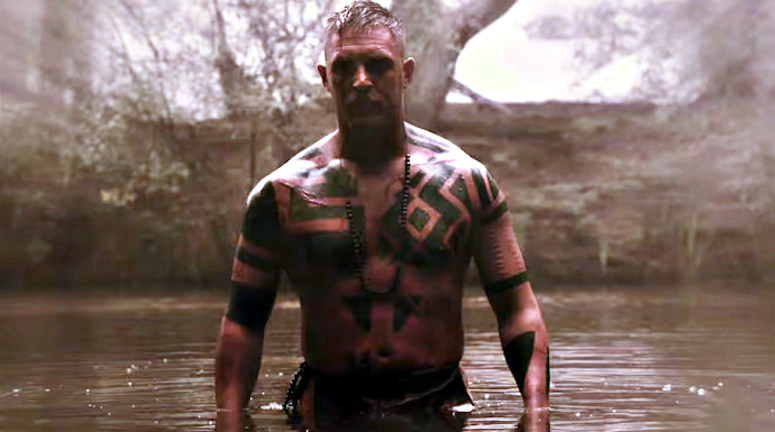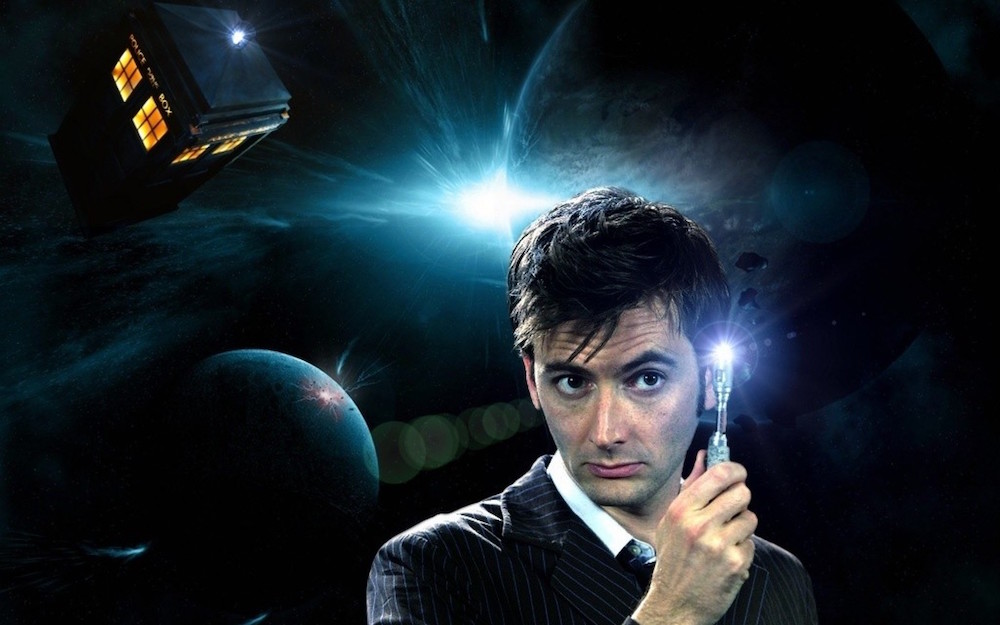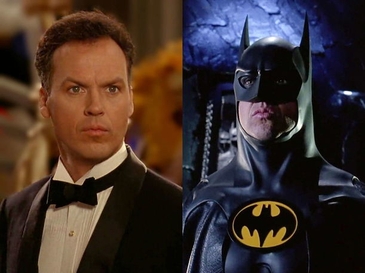
The Flash is officially in theaters today. A film riddled with controversey due to actions by star Ezra Miller, it has faced a complicated promotional process and a campaign of individuals refusing to see the film out of protest against its troubled star. For me, there were two draws to go and see it. A lot of folks worked hard to get it made who had nothing to do with Miller’s actions. Going to see this supports them. Second, Michael Keaton’s run as the Caped Crusader has a lot of meaning in my life. 1989’s Batman is not only how this character became my favorite comic book hero, but it was also the distinct moment that I fell in love with movies at the age of 6. I went to see this film for him.

Reflecting on Keaton’s run as Batman, it is shaped by two entertaining and often edgy films helmed by auteur director Tim Burton. Batman caused a splash upon its release on June 23, 1989 and in the process, breathed new life into the comic blockbuster long before these types of films became what they are today. Opting not to fucntion strictly as an origin film, it takes the viewer right into the heart of Bruce Wayne’s existence as Batman. Any exploration of his past traumas are presented through precise flashbacks that shape a personal approach to the hero/villain dynamic between he and the Joker. This makes the bold narrative move to have Jack Napier (the Joker’s real name in this rendition) be the one who killed his parents, thus making things much more personal for Wayne and in turn, clearly displaying an instance where Batman indirectly kills one of his greatest adversaries.
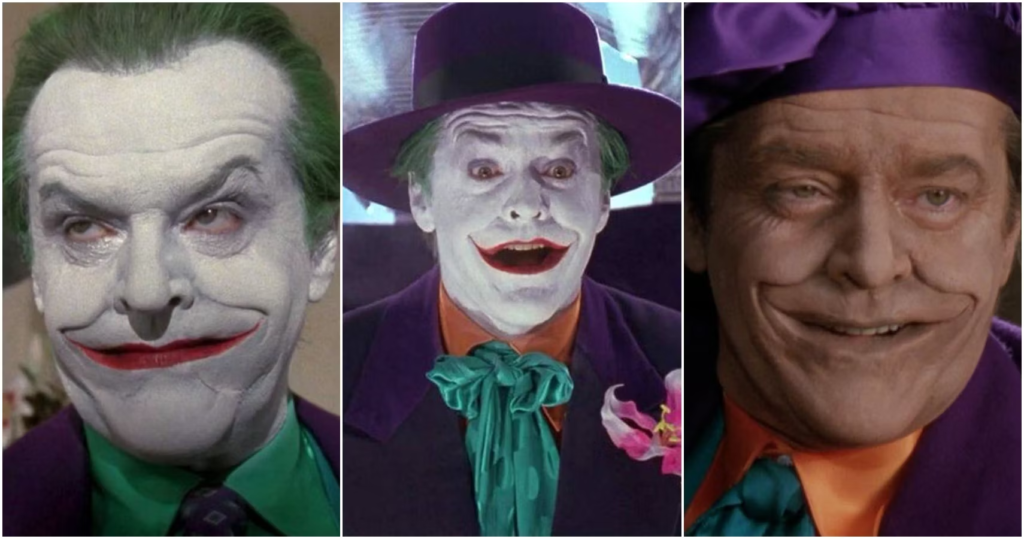
Taking noted influence from the Golden Era gansgster films of the 1930s, the Joker is presented as a mobster working his way up the ranks of Gotham’s criminal underworld. His narcissistic persona and desire to be a feared public figure drive his motivations. He’s a pretty boy, he knows it, and no one around him is allowed to be better than him, not even his boss, who’s girlfriend he is involved with in an infidelitous affair, which eventually leads to the incident that shapes him into the Clown Prince of Gotham. Its the facial and bodily disfigurement he experiences after falling into a tub of chemicals, leaving him with a permanent grin that brings out his fully menacing villianous persona. If he cannot be the most beautiful man in the world, no one else can. His motives are further elevated when he realizes Batman is getting more press time than he is. The Joker is a man driven by his sense of narcissism and self-importance. What begins as a motivation to eliminate Batman because he is a threat to his public attention, soon becomes a motive to finish what started during Bruce Wayne’s childhood. Sparing him after murdering his parents right before his eyes led to his most personal adversarial presence, one that threatens his own dominance. In the process, if he cannot have Vickie Vale, the object of his affection after disfiguring his own girlfriend to match his physical flaws, no one can. Even the entire city of Gotham is not permitted to be prettier of more respected than he is. This becomes a definitive aspect of his motivation to tamper with common household beauty products that kill off Gotham’s most attractive citizens.
The standoff between Batman and the Joker is one defined as humility pitted against narcissism. The billionaire who chooses to live under the radar by most publicly presenting himself as the hero Gotham needs going against the self-righteous criminal who cannot handle anyone taking his spotlight away from him. For Bruce Wayne, its avenging what was taken away from him. For Jack Napier, its protecting his most vain motivations and ensuring no one else can have what he does not.
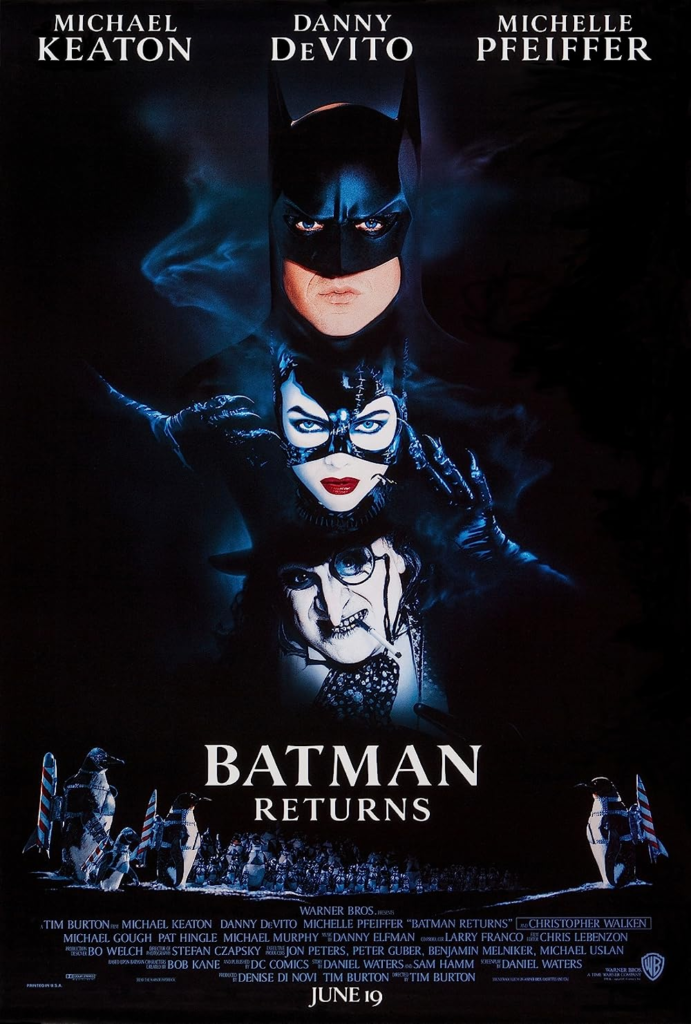
After the massive success of Batman, Warner Bros. was determined to deliver a sequel, but Tim Burton was not inclined to come back. He desired more creative control and in order to secure their star director, the studio gave in to his demands. What resulted is a featured that reflected more of Burton’s own vision for a Batman film. Batman Returns elevates the gothic nature of this property, one that is more eerie and haunting through its exploration of its central antagonist, the Penguin. A man abandoned by his parents as a baby because of his physical deformities, it echoes the villainous motivations of the Joker in the preceding film. The Penguin also looks to become a public figure by entering Gotham’s mayoral race by manipulating one of the city’s other wealthy citizens, Max Schreck (a clear nod to the 1922 film Nosferatu), menacingly played by Christopher Walken. Standards of beauty are also applied to Selena Kyle, who after surviving an attempted murder by Schreck, her boss, sees a transformation from a meek and inconfident secretary to a seductive, bondage-themed temptress in the form of Catwoman. Her new sense of empowerment leads her to target men who do her wrong, eventually capturing the heart of Bruce Wayne, developing a bond between two people who harbor secret identities.
Burton’s creative freedom makes this one of the most unique Batman films ever made. A feature that balances the studio aesthetic of a blockbuster with the auteur vision of its macabre-themed filmmaker, while also doubling as a Christmas film. It reflects how the holidays can be a depressing time for some, channeling their lonliness and voids in life while others around them embrace what is seen as the happiest time of the year. Bruce still mourns his parents and comes to terms with his split from Vickie Vale, while Selena finds herself consumed by the feeling of being undesired and Oswald Cobblepot lives off the bitterness of his own parental abandonment. To give this film a setting at Christmas only further elevated the loneliness and void of its characters’ existence. All the while, the tense plot point of the Penguin orchestrating the kidnapping of the first born babies of Gotham’s elites plays into his idea of causing the same misery toward others that was caused to him.

There is a clear parallel regarding Bruce Wayne in both of these Burton films. Bruce reveals his identity as Batman to both his love interests respectively. Micheal Keaton’s Bruce Wayne is searching for love and is aware that to do so, he must reveal his true identity to the one he cares for. As implied in the sequel, Vickie could not handle being with a man who has to balance two identities, while in the second, Bruce was forced to reveal his identiy when realizing that Selena herself was also living a secret life, except one that is adversarial to his. It is these bold narrative choices that brings a lot of thematic personality and viewer effect to these two respective films.
Sadly, this period for the franchise would be dwindled by changes deemed necessary by the studio after parents specifically complained about the dark nature of the Batman Returns specifically. Between the disturbing storyline of the Penguin’s origin, a scene where he bites a man’s nose off, causing projectile blood to spill out, and the sexually-driven aesthetic of Catwoman’s portrayal, the studio wanted to ensure financial profit remained as massive as possible, especially after this sequel did not fully meet or elevate the numbers of its predecessor.
While bold thematic and narrative choices would be applied to Batman films in the future through Christopher Nolan’s run with the character, and Christian Bale made for a great Bruce Wayne/Batman, surrounded by quality films in the process, what we got in between these specific installments was less than stellar. I can give or take Val Kilmer in the role, which clearly expressed a discomfort he had with the physical demands of the role, George Clooney was a strange fit and a performance I have learned to find amusement in and laugh with over the years. But, the two films to feature these actors respectively, Batman Forever and Batman & Robin, are a far cry from the immense quality we got with Keaton’s run. Eventually, Ben Affleck would have his own moments as the Caped Crusader, but because of the impact these two Burton films had on me, Michael Keaton has and always will be MY Batman.


